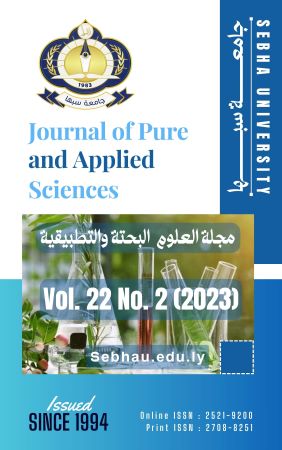Leveraging Latent Natural Language Processing Techniques for User Story Management in Agile Software Development
Abstract
User story management is a critical aspect of agile software development, as it involves understanding and prioritizing the needs of stakeholders, and translating them into actionable tasks for development teams. Furthermore, the identification of new activities within products is crucial for enhancing software quality assurance, and user story management is a crucial component of agile software development and software testing. Reusing manually written test steps would be a waste of time and effort for the testers because requirements in agile software development are continually changing and eventually becoming out-dated. Therefore, developers need to implement the necessary functions and write test steps for user stories to determine the desired behaviour or desired result of the program. In an agile world, the user story is the link between the customer and the development team, as well as the main pillar on which the development team relies to understand the product requirements. Therefore, developers need to implement the necessary functions and write test steps for user stories to determine the desired behaviour or desired result of the program. Since agile testing can detect defects early in the software life cycle and deliver a high-quality product, we propose our approach to generating test cases using natural language processing to analyse the user story. Therefore, Neural Language Processing (NLP) techniques help the development team to obtain clear data and achieve customer satisfaction.
References
Almanaseer, A. M., Alzyadat, W., Muhairat, M., Al-Showarah, S., & Alhroob, A. (2022). A proposed model for eliminating nonfunctional requirements in Agile Methods using natural language processes. 2022 International Conference on Emerging Trends in Computing and Engineering Applications, ETCEA 2022 - Proceedings. https://doi.org/10.1109/ETCEA57049.2022.10009796.
Beck, K., Beedle, M., Bennekum, A. Van, Cockburn, A., Cunningham, W., Fowler, M., Grenning, J., Highsmith, J., Hunt, A., Jeffries, R., Kern, J., Marick, B., Martin, R. C., Mellor, S., Schwaber, K., Sutherland, J., & Thomas, D. (2001). Manifesto for Agile Software Development. The Agile Alliance.
Bhalerao, S., & Ingle, M. (2010). Analyzing the Modes of Communication in Agile Practices. 391–395.
Chowdhary, K. R. (2020). Fundamentals of artificial intelligence. In Fundamentals of Artificial Intelligence. https://doi.org/10.1007/978-81-322-3972-7
Deursen, A. Van, Klint, P., & Visser, J. (2000). Domain-specific languages: an annotated bibliography. ACM Sigplan Notices, 35(6), 26–36. https://doi.org/10.1145/352029.352035
Ereiz, Z., & Music, D. (2019). Scrum Without a Scrum Master. 2019 IEEE International Conference on Computer Science and Educational Informatization, CSEI 2019, 325–328. https://doi.org/10.1109/CSEI47661.2019.8938877
Gunes, T., & Aydemir, F. B. (2020). Automated Goal Model Extraction from User Stories Using NLP. Proceedings of the IEEE International Conference on Requirements Engineering, 2020-Augus, 382–387. https://doi.org/10.1109/RE48521.2020.00052.
Gupta, A., Poels, G., & Bera, P. (2023). Generating multiple conceptual models from behavior-driven development scenarios. Data and Knowledge Engineering, 145(January), 102141. https://doi.org/10.1016/j.datak.2023.102141.
Hoda, R., Noble, J., & Marshall, S. (2011). The impact of inadequate customer collaboration on self-organizing Agile teams. Information and Software Technology, 53(5), 521–534. https://doi.org/10.1016/j.infsof.2010.10.009
Izmailov, A. Y., Liskin, I. V., Lobachevsky, Y. P., Sidorov, S. A., Khoroshenkov, V. K.
Mironova, A. V., & Luzhnova, E. S. (2017). Simulation of soil-cutting blade wear in an artificial abrasive environment based on the similarity theory. Russian Agricultural Sciences. https://doi.org/10.3103/s1068367417010104.
Kevin Sungkur, R., & Ramasawmy, M. (2014). Knowledge4Scrum, a novel knowledge management tool for agile distributed teams. Vine, 44(3), 394–419. https://doi.org/10.1108/VINE-12-2013-0068.
Korkala, M., Abrahamsson, P., & Kyllönen, P. (2006). A case study on the impact of customer communication on defects in Agile software development. Proceedings - AGILE Conference, 2006. https://doi.org/10.1109/AGILE.2006.1.
Kumar, S., & Solanki, A. (2023). A Natural Language Processing System using CWS Pipeline for Extraction of Linguistic Features. Procedia Computer Science, 218, 1768–1777. https://doi.org/10.1016/j.procs.2023.01.155
Landhäußer, M., & Genaid, A. (2012). Connecting User Stories and code for test development. 2012 3rd International Workshop on Recommendation Systems for Software Engineering, RSSE 2012 - Proceedings, 33–37. https://doi.org/10.1109/RSSE.2012.6233406.
López-Martínez, J., Ramírez-Noriega, A., Juárez-Ramírez, R., Licea, G., & Jiménez, S. (2017). User stories complexity estimation using bayesian networks for inexperienced developers. Cluster Computing. https://doi.org/10.1007/s10586-017-0996-z.
Moløkken-Østvold, K., & Furulund, K. M. (2007). The relationship between customer collaboration and software project overruns. Proceedings - AGILE 2007, 72–83. https://doi.org/10.1109/AGILE.2007.57.
Pikkarainen, M., Haikara, J., Salo, O., Abrahamsson, P., & Still, J. (2008). The impact of agile practices on communication in software development. Empirical Software Engineering. https://doi.org/10.1007/s10664-008-9065-9.
Rahman, M., & Gao, J. (2015). A reusable automated acceptance testing architecture for microservices in behavior-driven development. Proceedings - 9th IEEE International Symposium on Service-Oriented System Engineering, IEEE SOSE 2015, 30, 321–325. https://doi.org/10.1109/SOSE.2015.55.
Robey, D., Welke, R., & Turk, D. (2001). Traditional , Iterative , and Component-Based Development : A Social Analysis of Software Development Paradigms. Information Technology and Management, 2, 53–70. https://doi.org/10.1023/A:1009982704160.
Authors
Copyright (c) 2023 Journal of Pure & Applied Sciences

This work is licensed under a Creative Commons Attribution 4.0 International License.
In a brief statement, the rights relate to the publication and distribution of research published in the journal of the University of Sebha where authors who have published their articles in the journal of the university of Sebha should how they can use or distribute their articles. They reserve all their rights to the published works, such as (but not limited to) the following rights:
- Copyright and other property rights related to the article, such as patent rights.
- Research published in the journal of the University of Sebha and used in its future works, including lectures and books, the right to reproduce articles for their own purposes, and the right to self-archive their articles.
- The right to enter a separate article, or for a non-exclusive distribution of their article with an acknowledgment of its initial publication in the journal of Sebha University.
Privacy Statement The names and e-mail addresses entered on the Sabha University Journal site will be used for the aforementioned purposes only and for which they were used.





